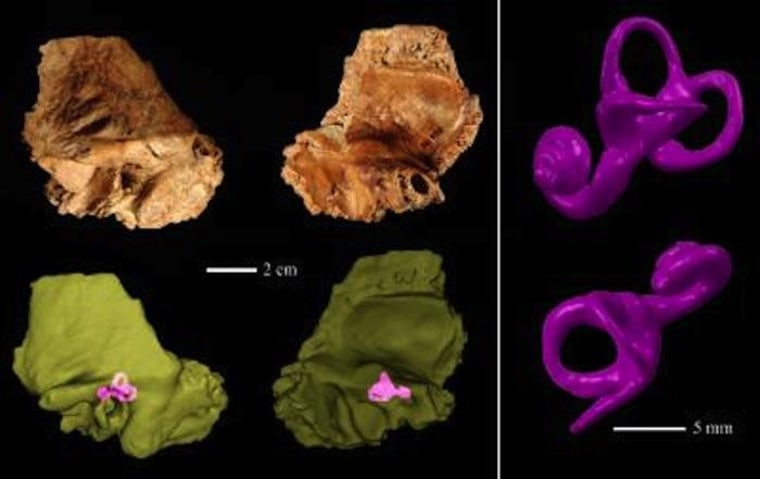The remains of an ancient human in China not thought to be Neanderthal has an inner ear much like that of humans' closest extinct relatives, according to a new study. These new findings could be evidence of interbreeding between Neanderthals and other species of archaic humans in China; however, the researchers say human evolution could be more complicated than is often thought, and the implications of the new discovery remain unclear.
Although modern humans are the only living members of the human family tree, a number of other human lineages once lived alongside the ancestors of modern humans. These so-called archaic humans included Neanderthals, the closest extinct relatives of modern humans, who lived in Eurasia roughly between 200,000 and 30,000 years ago.
To learn more about human evolution, scientists investigated a 100,000-year-old human skull known as Xujiayao 15, found 35 years ago in northern China alongside human teeth and bone fragments. At first, the researchers thought that the skull belonged to an archaic human. But they discovered that, anatomically, the skull — and the fossils discovered alongside it — had characteristics typical of a non-Neanderthal form of archaic human. [ Image Gallery: Our Closest Human Ancestor ]
Sign up for top Science news delivered direct to your inbox

"It's clearly not modern human," said study co-author Erik Trinkaus, an anthropologist at Washington University in St. Louis.
However, micro-CT scans of the skull revealed an inner ear much like those seen in Neanderthals. "We were very surprised," Trinkaus told Live Science. "I said, 'My God, it looks like a Neanderthal.'"
The scientists detailed their findings online today (July 7) in the journal Proceedings of the National Academy of Sciences.
— Charles Q. Choi, Live Science
This is a condensed version of a report from Live Science. Read the full report. Follow us @livescience, Facebook & Google+.
More from Live Science: